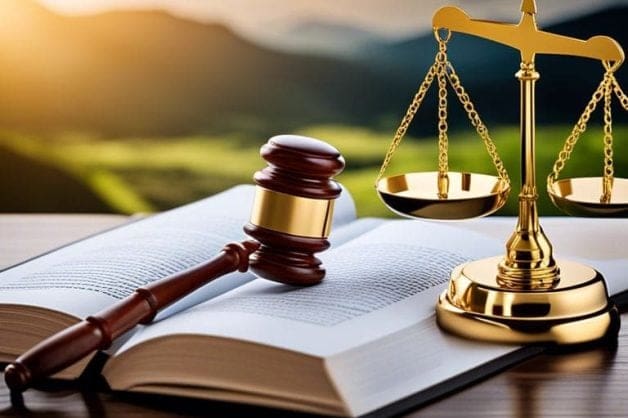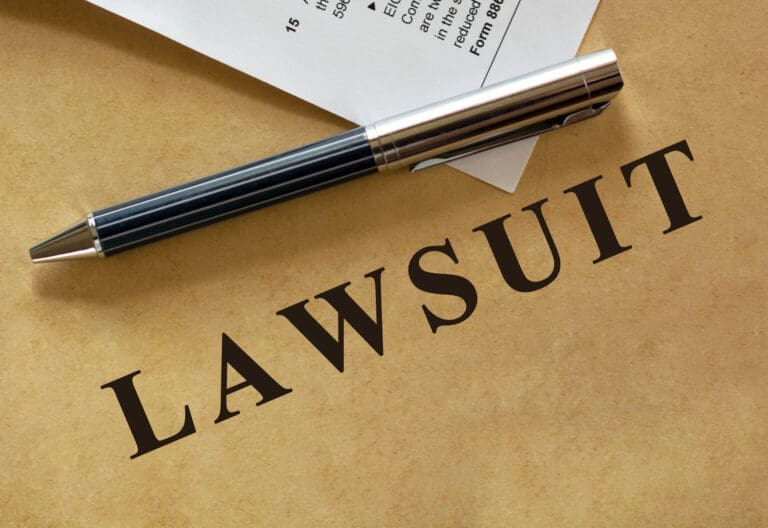Resources law is a complex and dynamic area of legal practice that governs the use, management, and conservation of natural resources. These laws ensure that resources such as water, minerals, forests, and wildlife are utilized sustainably and responsibly. Understanding resources law is essential for individuals, businesses, and policymakers involved in resource management to ensure compliance and promote environmental stewardship. This article delves into the key aspects of resources law, including regulatory frameworks, compliance requirements, and their impact on resource management.
The Importance of Resources Law
Resources law plays a critical role in regulating the use and conservation of natural resources. These laws are designed to balance the needs of resource users with the protection of the environment and public health. Resources law helps to ensure that natural resources are used efficiently and sustainably, preventing overexploitation and degradation.
One of the primary purposes of resources law is to establish a legal framework for managing natural resources. By setting standards for resource extraction, use, and conservation, these laws promote responsible resource management and protect ecosystems. Compliance with resources law is crucial for individuals and businesses to avoid sanciones legales, support environmental sustainability, and maintain public trust.
Key Components of Resources Law
The legal framework for resources law is multifaceted and includes various components that address different aspects of resource management. Some of the key components of resources law include:
- Regulatory Agencies: Several federal and state agencies are responsible for enforcing resource regulations. These agencies include the Environmental Protection Agency (EPA), the Department of the Interior (DOI), and state natural resources departments.
- Resource Management Standards: These standards set requirements for the sustainable use and conservation of natural resources. Standards cover areas such as water quality, air quality, land use, and wildlife protection.
- Environmental Impact Assessments (EIAs): EIAs are a critical tool for evaluating the potential environmental impacts of resource-related projects. These assessments help to identify and mitigate negative impacts, ensuring that projects comply with environmental standards.
- Permitting and Licensing: Resource-related activities often require permits and licenses from regulatory agencies. These permits ensure that resource use is regulated and monitored to prevent environmental harm.
- Enforcement and Compliance: Regulatory agencies conduct inspections and monitor resource-related activities to ensure compliance with resources law. Enforcement actions can include fines, permit revocations, and legal proceedings for violations.
Regulatory Agencies and Their Roles
Regulatory agencies play a crucial role in enforcing resources law and ensuring compliance with resource management regulations. These agencies have the authority to issue permits, conduct inspections, and impose penalties for non-compliance. Understanding the roles and responsibilities of these agencies is essential for resource users and managers.
Environmental Protection Agency (EPA): The EPA is responsible for regulating environmental impacts related to resource use, such as water and air quality. The EPA sets standards for pollution control, conducts inspections, and enforces compliance with environmental regulations. The EPA also oversees the implementation of federal environmental laws, such as the Clean Water Act and the Clean Air Act.
Department of the Interior (DOI): The DOI manages the nation’s natural resources, including public lands, minerals, and wildlife. The DOI’s responsibilities include issuing permits for resource extraction, managing national parks and wildlife refuges, and enforcing conservation laws. The DOI works to ensure that natural resources are used sustainably and preserved for future generations.
State Natural Resources Departments: State natural resources departments regulate resource use and conservation at the state level. These departments issue permits, conduct inspections, and enforce compliance with state resource management laws. State agencies often work in collaboration with federal agencies to implement resource regulations and protect natural resources.
Resource Management Standards and Compliance
Resource management standards are the cornerstone of resources law, setting requirements for the sustainable use and conservation of natural resources. Compliance with these standards is essential for individuals and businesses to avoid legal issues and promote environmental stewardship.
Water Quality Standards: Water quality standards regulate the discharge of pollutants into water bodies, ensuring that water resources are safe for human use and aquatic life. Compliance with water quality standards involves obtaining permits for discharges, implementing pollution control measures, and monitoring water quality.
Air Quality Standards: Air quality standards set limits on the emission of pollutants into the atmosphere, protecting public health and the environment. Compliance with air quality standards requires businesses to implement emission control technologies, obtain permits, and monitor air emissions.
Land Use Regulations: Land use regulations govern the development and use of land, ensuring that land resources are managed sustainably. These regulations include zoning laws, conservation easements, and land reclamation requirements. Compliance with land use regulations involves obtaining permits, conducting environmental assessments, and implementing land management practices.
Wildlife Protection Laws: Wildlife protection laws aim to conserve wildlife species and their habitats. These laws regulate activities such as hunting, fishing, and habitat destruction. Compliance with wildlife protection laws involves obtaining permits, adhering to hunting and fishing regulations, and implementing conservation measures.
Environmental Impact Assessments (EIAs)
Environmental Impact Assessments (EIAs) are a critical tool for evaluating the potential environmental impacts of resource-related projects. EIAs help to identify and mitigate negative impacts, ensuring that projects comply with environmental standards and promote sustainable resource use.
The EIA Process: The EIA process involves several steps, including scoping, impact analysis, mitigation planning, and public consultation. During scoping, the scope of the assessment is determined, and key environmental issues are identified. Impact analysis involves assessing the potential environmental impacts of the project and identifying mitigation measures to address these impacts. Mitigation planning involves developing strategies to minimize or avoid negative impacts. Public consultation provides an opportunity for stakeholders to provide input and raise concerns about the project.
Compliance with EIAs: Compliance with EIAs is essential for obtaining permits and approvals for sustainability projects. Regulatory agencies review EIA reports to ensure that potential environmental impacts are adequately addressed and that mitigation measures are implemented. Failure to comply with EIA requirements can result in permit denials, legal penalties, and project delays.
Benefits of EIAs: EIAs provide several benefits, including improved environmental protection, enhanced project planning, and increased public involvement. By identifying and addressing potential environmental impacts, EIAs help to ensure that sustainability projects are environmentally responsible. EIAs also enhance project planning by providing valuable information for decision-making and improving project design. Public involvement in the EIA process helps to build trust and support for the project, ensuring that stakeholder concerns are considered.
Permitting and Licensing
Permitting and licensing are critical components of resources law, ensuring that resource-related activities are regulated and monitored to prevent environmental harm. Regulatory agencies issue permits and licenses to authorize resource use and set conditions for compliance.
Types of Permits and Licenses: Various types of permits and licenses are required for resource-related activities, including water discharge permits, air emission permits, land use permits, and wildlife permits. Each type of permit sets specific conditions for resource use and compliance with environmental standards.
The Permitting Process: The permitting process involves several steps, including application submission, review, public consultation, and permit issuance. Applicants must submit detailed information about the proposed project, including potential environmental impacts and mitigation measures. Regulatory agencies review the application to ensure compliance with environmental standards and conduct public consultations to gather stakeholder input. If the application meets the requirements, the agency issues the permit with conditions for compliance.
Compliance with Permit Conditions: Compliance with permit conditions is essential for maintaining the validity of the permit and avoiding legal penalties. Permit conditions may include monitoring and reporting requirements, pollution control measures, and environmental management practices. Regulatory agencies conduct inspections and audits to ensure compliance with permit conditions and take enforcement actions for violations.
Enforcement and Compliance
Enforcement and compliance are critical components of resources law, ensuring that resource users adhere to environmental standards and regulations. Regulatory agencies conduct inspections and monitor resource-related activities to ensure compliance and take enforcement actions for violations.
Inspections and Monitoring: Regulatory agencies conduct routine inspections and monitoring of resource-related activities to assess compliance with environmental standards. Inspections may include site visits, review of records, and sampling of environmental media such as water and air. Monitoring involves collecting data on environmental conditions and resource use to track compliance and identify potential issues.
Enforcement Actions: When resource users violate environmental standards, regulatory agencies can take enforcement actions to address the violations and protect public health and the environment. Enforcement actions can include issuing warning letters, imposing fines, revoking permits, and initiating legal proceedings. Agencies work with resource users to resolve violations and implement corrective actions.
Compliance Assistance: Regulatory agencies also provide compliance assistance to help resource users understand and comply with environmental standards. Compliance assistance programs offer resources, training, and technical support to promote voluntary compliance and improve environmental performance.
Legal Challenges and Disputes in Resources Law
Resources law can lead to various legal challenges and disputes, including regulatory compliance issues, liability for environmental damage, and disputes over resource use and access. Understanding the legal avenues for resolving these disputes is essential for resource users and managers.
Regulatory Compliance Issues: Resource users must comply with a complex array of regulations, and non-compliance can result in legal penalties and enforcement actions. Common compliance issues include violations of water and air quality standards, land use regulations, and wildlife protection laws. Regulatory compliance issues can be resolved through negotiations with regulatory agencies, administrative hearings, and, if necessary, litigation.
Liability for Environmental Damage: Resource users can be held liable for environmental damage caused by their activities. Liability claims can result in significant financial losses and damage to the business’s reputation. Resource users must implement robust environmental management practices and maintain documentation to demonstrate compliance with environmental standards. Legal defense strategies may involve challenging the causation of the damage and demonstrating adherence to environmental practices.
Disputes Over Resource Use and Access: Disputes over resource use and access can arise between different stakeholders, such as landowners, businesses, and government agencies. These disputes may involve issues such as water rights, land use conflicts, and access to public resources. Legal strategies for resolving resource disputes may include negotiation, mediation, arbitration, and litigation.
The Role of Technology in Resource Management Compliance
Technology plays an increasingly important role in ensuring compliance with resources law and improving the efficiency of resource management. Digital tools and platforms can enhance monitoring, reporting, and data analysis, supporting better decision-making and compliance.
Geographic Information Systems (GIS): GIS technology provides valuable tools for mapping and analyzing spatial data related to resource management. GIS can help resource users track land use, monitor environmental conditions, and identify potential impacts. GIS supports compliance with land use regulations and enhances planning and decision-making.
Remote Sensing: Remote sensing technology uses satellites and aerial imagery to monitor environmental conditions and resource use. Remote sensing provides real-time data on land cover, water quality, and vegetation health, supporting compliance with environmental standards. Remote sensing can also detect illegal resource use and monitor compliance with permits and licenses.
Environmental Monitoring Systems: Environmental monitoring systems use sensors and data loggers to collect real-time data on environmental conditions such as water quality, air quality, and soil health. These systems provide continuous monitoring and early detection of potential issues, supporting compliance with environmental standards. Environmental monitoring systems enhance transparency and accountability in resource management.
Future Directions in Resources Law
As the landscape of resource management continues to evolve, resources law must adapt to address new challenges and opportunities. Future directions in resources law may include:
- Promoting Sustainable Practices: Regulations that promote sustainable resource management practices, such as reducing resource consumption and minimizing environmental impacts, will become increasingly important. Future laws may include incentives for sustainable practices and stricter regulations on resource use and conservation.
- Enhancing Resource Conservation: Improving conservation efforts for natural resources will be a focus of future resource management regulations. Enhanced conservation policies, such as habitat protection and restoration, will help to preserve biodiversity and ecosystem services.
- Addressing Climate Change: Resources law will play a critical role in addressing climate change by regulating greenhouse gas emissions and promoting low-carbon resource use. Future regulations may include carbon pricing, emissions trading, and policies to phase out fossil fuels.
- Strengthening International Collaboration: Globalization of resource use requires stronger international collaboration on resource management standards and enforcement. Future resources law may involve harmonizing regulations across countries, improving information sharing, and coordinating responses to resource-related issues.
Conclusión
Resources law is a fundamental aspect of resource management, providing the legal framework necessary to regulate the use, conservation, and protection of natural resources. Understanding and complying with resources law is essential for individuals and businesses to promote sustainable resource use, avoid legal penalties, and protect the environment.
Eficaz resources law balances the need for resource use with the protection of ecosystems and public health. By setting standards for resource management and conservation, these laws ensure that natural resources are used responsibly and sustainably. Compliance with resources law helps to build trust and confidence in the resource management process, supporting long-term environmental stewardship and sustainability.
As the landscape of resource management continues to evolve, ongoing efforts to strengthen and adapt resources law will be essential in promoting sustainable, equitable, and resilient resource systems. By leveraging technology, encouraging public participation, and addressing emerging issues, resource regulations can support the long-term planning goals of municipalities and create more sustainable and reliable resource systems for future generations.
Type of Attorney for Resources Law Issues and How to Find Them on Attorneys.Media
When dealing with resources law issues, it is crucial to have an attorney who specializes in this area of law to navigate the complex regulations and ensure compliance. Resource attorneys are legal professionals with expertise in natural resources law, environmental compliance, land use regulations, and resource conservation. They provide invaluable guidance to individuals, businesses, and policymakers involved in resource management, helping them navigate the legal landscape and avoid potential legal pitfalls.
Resource attorneys typically handle a wide range of issues, including regulatory compliance, risk management, and litigation. They assist clients in understanding and complying with federal and state resource regulations, developing environmental impact assessments (EIAs), and obtaining necessary permits and licenses. In the event of environmental damage or resource disputes, these attorneys provide legal defense and manage liability claims. They also represent clients in disputes with regulatory agencies, helping to resolve enforcement actions and negotiate settlements.
To find a qualified resource attorney on Attorneys.Media, you can utilize the platform’s comprehensive search features and resources. Start by visiting the Abogados.Media website and navigating to the search bar. Enter relevant keywords such as “resource attorney,” “natural resources lawyer,” or “environmental law attorney” to filter through the database of legal professionals. The search results will provide a list of attorneys who specialize in resources law, complete with their profiles, areas of expertise, and contact information. This allows you to review their credentials, experience, and client reviews to make an informed decision.
Additionally, Abogados.Media offers video interviews and profiles of resource attorneys, giving you a more in-depth look at their practice and approach. These resources can help you understand how each attorney can assist with your specific legal needs related to resources law. You can also find articles and legal insights on the platform that highlight the expertise of these attorneys and provide valuable information on navigating resources regulations. By leveraging these tools, you can confidently select an attorney who is well-equipped to handle the legal complexities of resources law and ensure your resource management practices comply with all relevant regulations.
Attorneys.Media Video Document References
- Is Personal Injury Part of Your Law Practice?
- As an Attorney, How Are You Generating Content for Your Online Presence?
- How Can You Help Potential New Clients Get Their Questions Answered?
- How Do You Differentiate Yourself When Someone Looks Online for Help?
- How Do You Differentiate Yourself as a Criminal Defense Attorney?
- Have You Been Thinking About Video Marketing for Your Law Firm?
- Should Attorneys Use Video Marketing to Attract New Clients?
- What Do Potential Clients See When They Research Your Name Online?
- Cómo puede ayudarle Attorneys.Media









